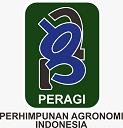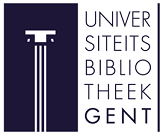Competitiveness of Indonesian Essential Oil Exports in the Chinese Market and Rival Countries
Abstract
Indonesia is one of the world’s largest producers of essential oils; however, its export competitiveness in the Chinese market has fluctuated over time. This study aims to analyze the level and dynamics of Indonesia’s essential oil export competitiveness compared to other major exporting countries in the Chinese market. The research uses secondary time-series data from 2011 to 2023 obtained from Trade Map. Competitiveness is assessed using the Revealed Comparative Advantage (RCA) and Dynamic Revealed Comparative Advantage (DRCA) methods. The findings reveal that Indonesia generally demonstrates strong competitiveness, except in 2011 when it was weak and in 2022 when it was moderate. Based on DRCA, Indonesia was classified as a “rising star” in 2011–2013 and 2017–2019, a “falling star” in 2013–2015, a “lost opportunity” in 2019–2021, and experienced a decline to the “lagging retreat” position in 2015–2017 and 2021–2023. These fluctuations are influenced by unstable production, limited product innovation, and quality standards that do not fully align with market requirements. To strengthen its competitiveness, Indonesia must enhance product quality, adopt technological innovations, and foster collaboration among stakeholders.
Keywords
Full Text:
PDFReferences
Badan Pusat Statistik. (2023). Ekspor Tanaman Obat, Aromatic dan Rempah-rempah Menurut Negara Tujuan Utama. https://www.bps.go.id/id/statistics-table/1/MjAxOSMx/ekspor-tanaman-obat--aromatik--dan-rempah-rempah-menurut-negara-tujuan-utama--2012-2022.html
Balai Informasi Standar Instrumen Pertanian. (2023). Serba serbi Minyak Atsiri Indonesia dan Potensi Pengembangannya untuk Pasar Internasional. https://bisip.bsip.pertanian.go.id/berita/serba-serbi-minyak-atsiri-indonesia-dan-potensi-pengembangannya-untuk-pasar-internasional
Balassa, B. 1965. Trade Liberalisation and Revealed Comparative Advantage. The Manchester School of Economic and Social Studies, 33(2), 99–123.
Dewan Atsiri Indonesia. (2018). Laporan Tahunan Industri Minyak Atsiri Indonesia. Jakarta: Dewan Atsiri Indonesia. https://atsiri-indonesia.org/
Edwards, L, & Schoer, V. (2002). Measures of competitiveness: a dynamic approach to South Africa's trade performance in the 1990s. South African Journal of Economics, 70(6), 1008-1046. https://doi.org/10.1111/j.1813-6982.2002.tb00055.x
Ekmen-Özçelik, S, & Erlat, G. (2013). What can we say about Turkey and its competitors in the EU market? An analysis by extensive and intensive margins. Topics in Middle Eastern and North African Economies, 15.
Erkan, B., & Yildirimci, E. (2015). Economic complexity and export competitiveness: The case of Turkey. Procedia-Social and Behavioral Sciences, 195, 524-533.
Faradiva, A. 2020. Analisis Daya Saing Ekspor Minyak Atsiri Indonesia (Doctoral dissertation, Universitas Hasanuddin).
Food and Agriculture organization. 2023. FAOSTAT: Essential oil production and trade statistics. Food and Agriculture Organization of the United Nations. https://www.fao.org/faostat/
Guerra, L. (2023). Essential oils market dynamics in the global trade: Competitive landscape and pricing strategies. Global Trade Review, 45(2), 123–138.
Hinloopen, J, & Van Marrewijk, C. (2001). On the empirical distribution of the Balassa index. Weltwirtschaftliches archiv, 137(1), 1-35.
Huda, F. A, Meitasari, D, & Widyawati, W. (2021). Analisis Daya Saing Ekspor Minyak Atsiri Nilam (Patchouli Essential Oil) Indonesia di Pasar Internasional dengan Negara Brazil, Amerika Serikat, Meksiko, dan Perancis Periode 2001-2018. Jurnal Ekonomi Pertanian dan Agribisnis, 5(4), 1069-1085.
Kartika, P. F, Ferhat, A, & Bimantio, M. P. (2023). Competitiveness Analysis of Indonesia Essential Oils as an Export Commodity in the International Market Using Revealed Comparative Advantage (RCA) Method. Jurnal Sosial Ekonomi dan Kebijakan Pertanian (AGRISOCIONOMICS), 7(1), 144-154.
Kementerian Perdagangan Republik Indonesia. (2025). Ekspor Produk Minyak Atsiri ke Tiongkok. LAMANSITU. https://lamansitu.kemendag.go.id/content/persyaratan-mutu-minyak-atsiri-tionkok
Media Center Riau. (2015). Lambatnya Pertumbuhan Ekonomi Tiongkok Masih Membayangi Ekonomi Dunia. https://mediacenter.riau.go.id/read/7348/lambatnya-pertumbuhan-ekonomi-tiongkok-masih-.html.
Mora, L. (2022). Kombinasi Minyak Atsiri Kulit Kayu Manis (Cinnamomum Burmannii), Sereh (Cymbopogon Citratus) dan Minyak Nilam (Pogostemon Cablin) Sebagai Pengikat Lilin Aromaterapi (Doctoral Dissertation).
Nurcahyani, M, & Salqaura, S. S. (2023). Analisis Kinerja Ekspor Minyak Atsiri Indonesia di Pasar Internasional. Agrifo: Jurnal Agribisnis Universitas Malikussaleh, 8(1), 51-57. https://doi.org/10.29103/ag.v8i1.11771
Nurfauziah, A, & Octaviani, S. (2021). Pra-Rancangan Pabrik Citrus Oil dari Kulit Jeruk Keprok Kapasitas 300 Ton/Tahun (Doctoral dissertation, Institut Teknologi Indonesia).
Prasetya, M. A. W., Simorangkir, C & Pribadi, D. M. A. (2022). Perdagangan Internasional Indonesia: Sebuah Komparasi di Masa Pandemi COVID-19. EXERO: Journal of Research in Business and Economics, 5(1), 82-111. https://doi.org/10.24071/exero.v5i1.5043
Puspita, R. A, Imamah, L, & MW, R. C. (2021). Daya Saing Minyak Atsiri Indonesia di Pasar Global. Buku Prosiding, 140.
Rosiana, N, Feryanto, F & Sinaga, V. R. (2017). Posisi Daya Saing Dan Tingkat Persaingan Minyak Atsiri Indonesia di Pasar Global. Agricore: Jurnal Agribisnis dan Sosial Ekonomi Pertanian Unpad, 2(1). https://doi.org/10.24198/agricore.v2i1.15044
Rosiana, N, Nurmalina, R., Winandi, R., & Rifin A. 2018. Dynamics of Indonesian robusta coffee competition among major competitor countries. Journal of Industrial and Beverage Crops, 5(1), 1-10. https://doi.org/10.21082/jtidp.v5n1.2018.p1-10
Tempo. (2010). Minyak Atsiri dari India dan Cina Saingan Berat Indonesia. https://bisnis.tempo.co/read/233451/minyak-atsiri-dari-india-dan-cina-saingan-berat-indonesia. (Diakses pada 3 Maret 2025)
The Observatory of Economic Complexity. (2021). Essential Oils: Trade and Market Overview. https://oec.world. (accessed 13 January 2025)
Turek, C and Stintzing, F. C. 2013. Stability of essential oils: a review. Comprehensive reviews in food science and food safety, 12(1), 40-53.
International Trade Map. (2024). List of importing markets for a product exported by united states of America product: 330129 essential oils, whether or not terpeneless, incl.https://www.trademap.org/Country_SelProduct_TS.aspx?nvpm=1%7c%7c%7c%7c%7c330129%7c%7c%7c6%7c1%7c1%7c2%7c2%7c1%7c2%7c1%7c%7c1
Tripathi, H. I. M. A. N. S. H. U, Suresh, R, Kumar, S. A. N. J. A. Y & Khan, F. E. R. O. Z. (2016). International Trade in Essential Oils and Resinoids: A Case Study of the Past 18 Years. Journal of Medicinal and Aromatic Plant Sciences, 38(1-4), 1-28. https://doi.org/10.62029/jmaps.v38i1.Tripathi
Refbacks
- There are currently no refbacks.


























